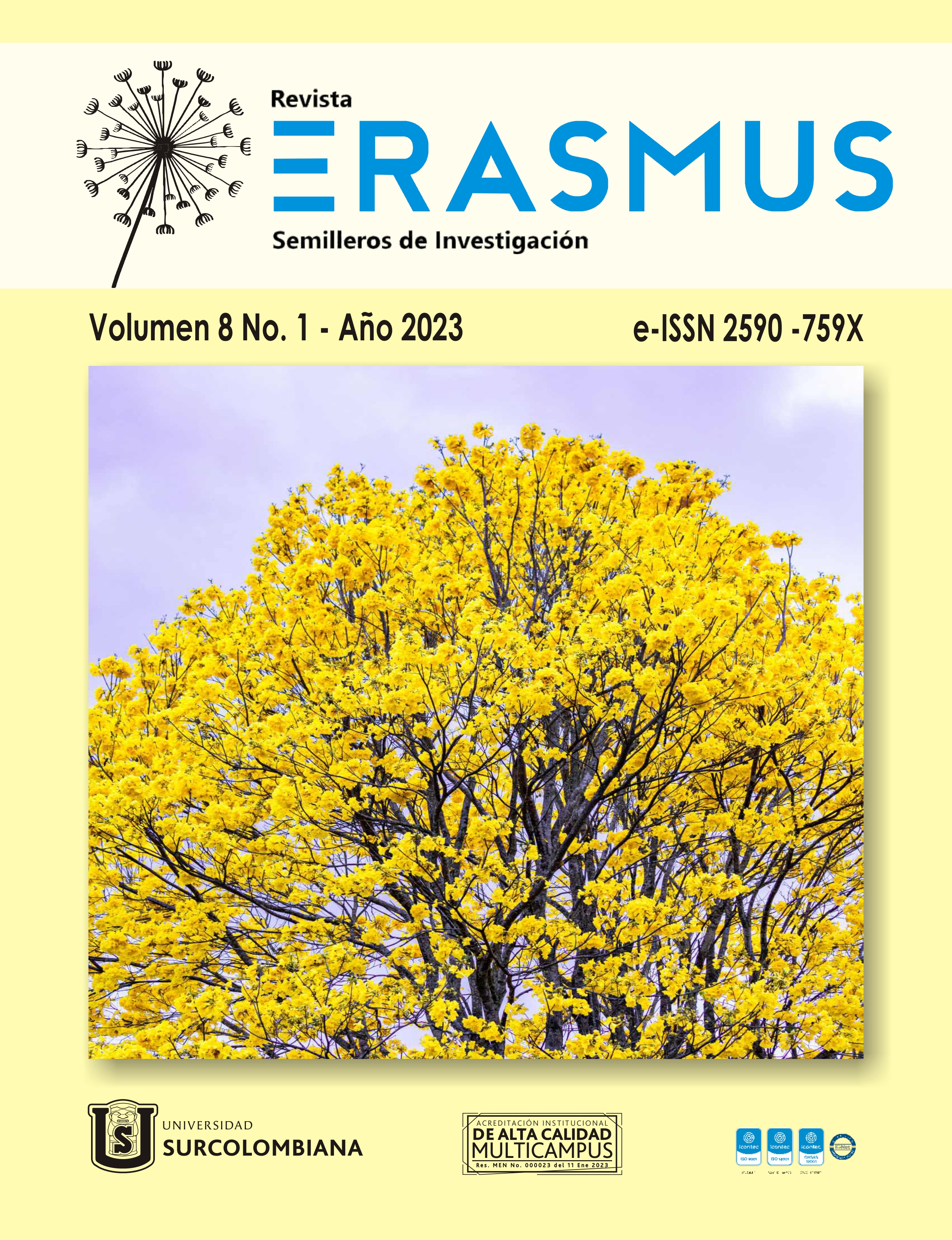Hummingbirds of the Department of Huila: A Documentary Review
Colibríes del Departamento del Huila: Una Revisión Documental
##plugins.themes.bootstrap3.article.main##
Hummingbirds are endemic to the American continent, belonging to the Trochilidae family, they are the second group of birds with the largest number of species in the world and they feed on the nectar of flowers and in some cases on arthropods. These birds pollinate a wide variety of plants, where they exert a biological association of mutualism known as ornithophilia, where both
organisms benefit. Based on the above, the objective is to carry out a review of the reported species of the Trochilidae family in Huila using as a methodology a bibliographic review of various scientific articles, books, websites, among other sources. To date, approximately 80 species of hummingbirds have been described in the department of Huila, however, in the bibliographic review, 4 species of endemic hummingbirds and 18 species of almost endemic hummingbirds were found, giving a total of 23 species of birds reported in the department. department, said the above, it is concluded that there are few investigations that
have been presented in Huila regarding this family, therefore it is proposed to promulgate and encourage proposals that increase the study of the diversity of hummingbirds in order to generate designs and implementation of strategies in conservation plans, finally generate awareness in environmental learning.
Downloads
##plugins.themes.bootstrap3.article.details##
Banco de la República. (2016, septiembre 10). Increíbles voladoras. Aves de la región andina central de Colombia.
https://babel. banrepcultural.org/digital/collection/p17054coll18/id/351/
Beardmore, C. J., Gustafson, M., Demarest, D. W., Kennedy, J. A., Couturier, A. R., Berlanga, H., Blancher, P. J., Panjabi, A. O., et al. (2009). Conservando a nuestras aves compartidas: La visión trinacional de Compañeros en Vuelo para la conservación de las aves terrestres. Cornell Lab of Ornithology.
Botero, E. U. (2016). El cambio climático y sus efectos en la biodiversidad en América Latina. Euroclima, 47, 1-86.
Brand, M., Betancourt, S., Caviedes, I., & Sánchez, F. (2022). Las aves focales del departamento del Huila. Corporación
Universitaria Minuto de Dios-UNIMINUTO. Huila biodiverso: Conceptos y desafíos, pp. 57-64.
Brand-Prada, M., Betancourth-Toro, J. S., & Caviedes-Rubio, D. I. (2021). Estado del conocimiento de la avifauna del Huila,
Colombia: Vacíos de información e investigaciones futuras. Ornitología Colombiana, 20, 37-54.
Calle, J. C. (2018, marzo 22). Distribución en Colombia de Colibri coruscans. http://repository.humboldt.org.
co/handle/20.500.11761/1353
Córdova-Zúñiga, K. G., & Urgilés-Rodríguez, M. G. (2017). Estrategia de ahorro energético nocturno en cuatro especies de
colibríes en la estación científica "El Gullán". Universidad del Azuay.
Cuervo, A. (2006, abril 12). Compendio de las aves reportadas en la jurisdicción de Corantioquia. https://www.corantioquia.
gov.co/ciadoc/fauna/AIRNR_CN_6840_2006.pdf
EFEverde, R. (2014, abril 3). El colibrí, 22 millones de años reinventándose como especie. EFEverde.
https://efeverde.com/colibri-22-millones-de-anos-reinventandose-como-especie/
Gómez, J. B., & Velásquez, A. C. (2020). Reconocimiento de la importancia ecológica de las aves y su contribución al cuidado de
la biodiversidad en el trapecio Amazónico con estudiantes de preescolar y primero en San Antonio (Perú). Revista
Electrónica EDUCyT, 1, 367-378.
Gutiérrez, A., Carrillo, E., & Rojas, S. (2004). Guia Ilustrada De Los Colibries De La Reserva Natural Río Ñambí. Ecotono.
Jaramillo, E. (2016). Variación genética y filogeografía de las poblaciones mesoamericanas de Colibri thalassinus (Swainson,
(Aves: Trochilidae) utilizando secuencias de DNA. Repositorio Institucional de la UNAM, 32, 1-75.
León, D. A. (2013). Efecto de la fragmentación sobre la interaccíon colibrí-flor en tres remanentes de bosque seco tropical en el
municipio de Chimichagua (Cesar, Colombia). Repositorio Unal, 32(1), 1-96.
Ornelas, J. F. (1996). Origen y evolución de los colibríes. Ciencias, 42, 38-47.
Rangel, O. (2005). La biodiversidad de Colombia. Palimpsestvs, 32(5), 292-304.
Restrepo, M., & Peña-Monroy, A. (2021, julio 19). Colibries, una historia de belleza y polinizacion. Revista Ambiental ÉOLO, 19,
-215.
Rey, J. E. (2018). Libro Colibríes de Cundinamarca | PDF | Aves | Biodiversidad. Asociación Bogotana de Ornitología.
Sierra-Morales, P., Almazán-Núñez, R., Ríos-Muñoz, C., & Arizmendi, M. (2016). Distribución geográfica y hábitat de la familia. Trochilidae (Aves) en el estado de Guerrero, México. Revista de biologia tropical, 64(1), 363-376.
Verhelst, J., Botero-Delgadillo, E., Salaman, P., & ProAves. (2014). El Estado de las Aves en Colombia. Fundación ProAves.








